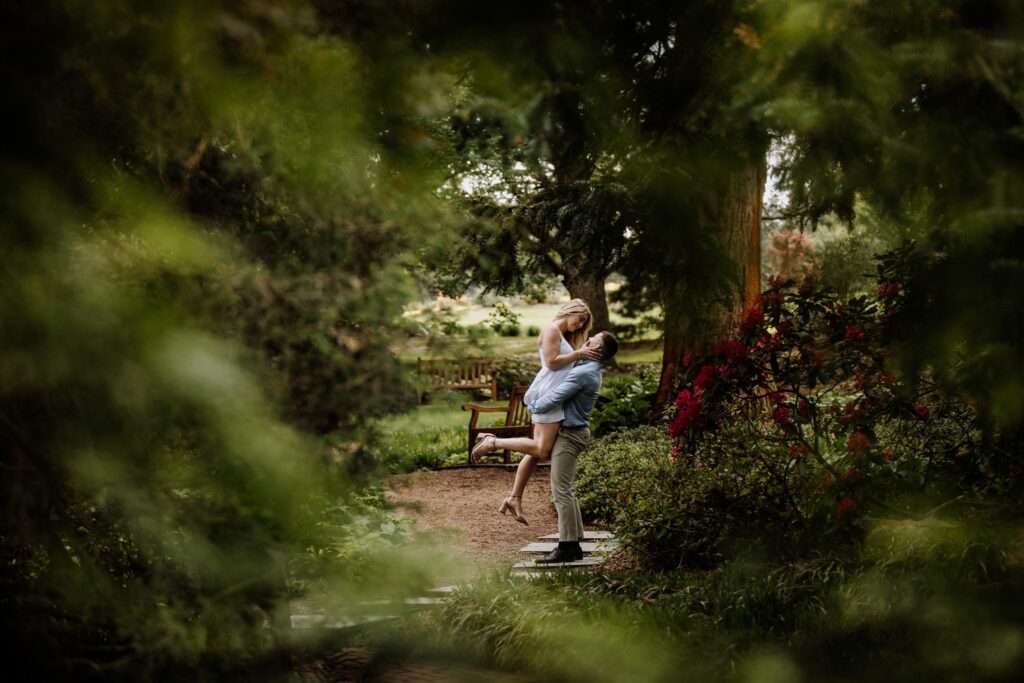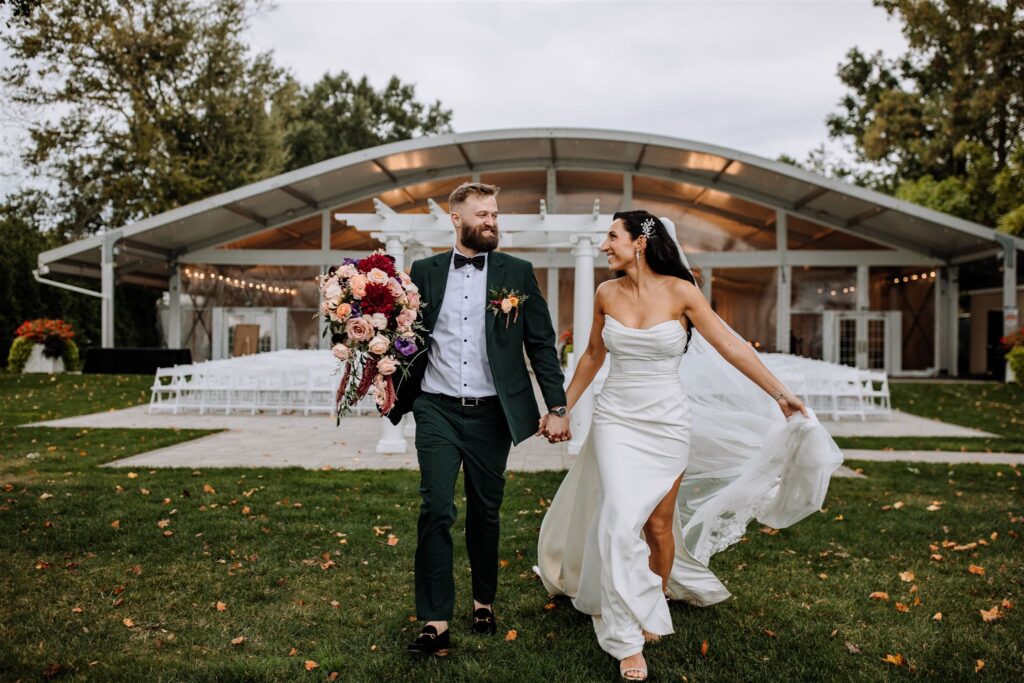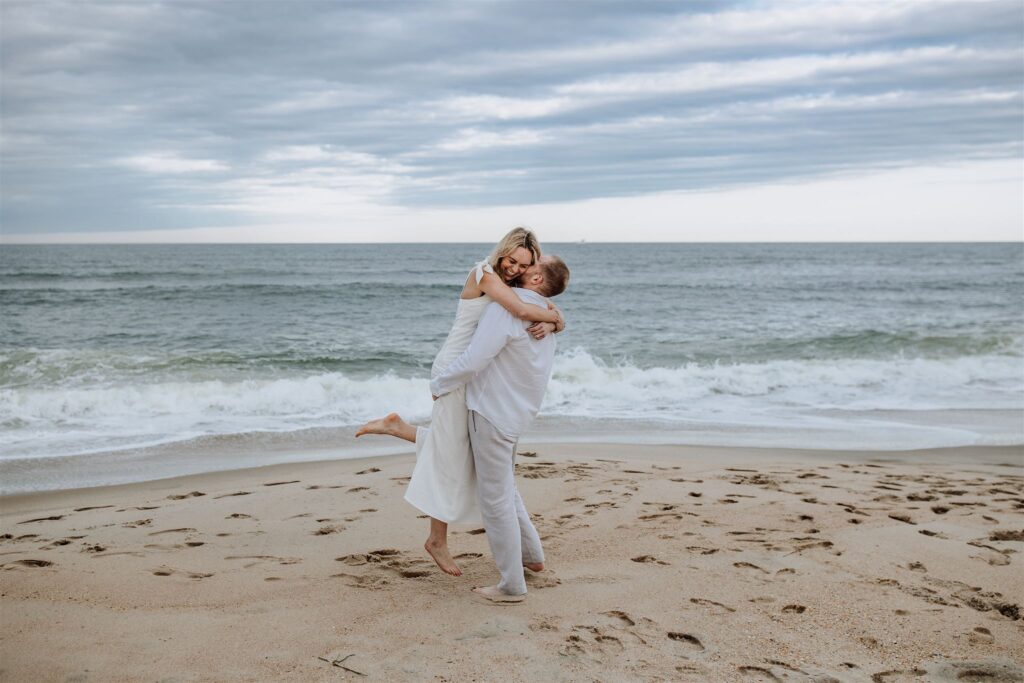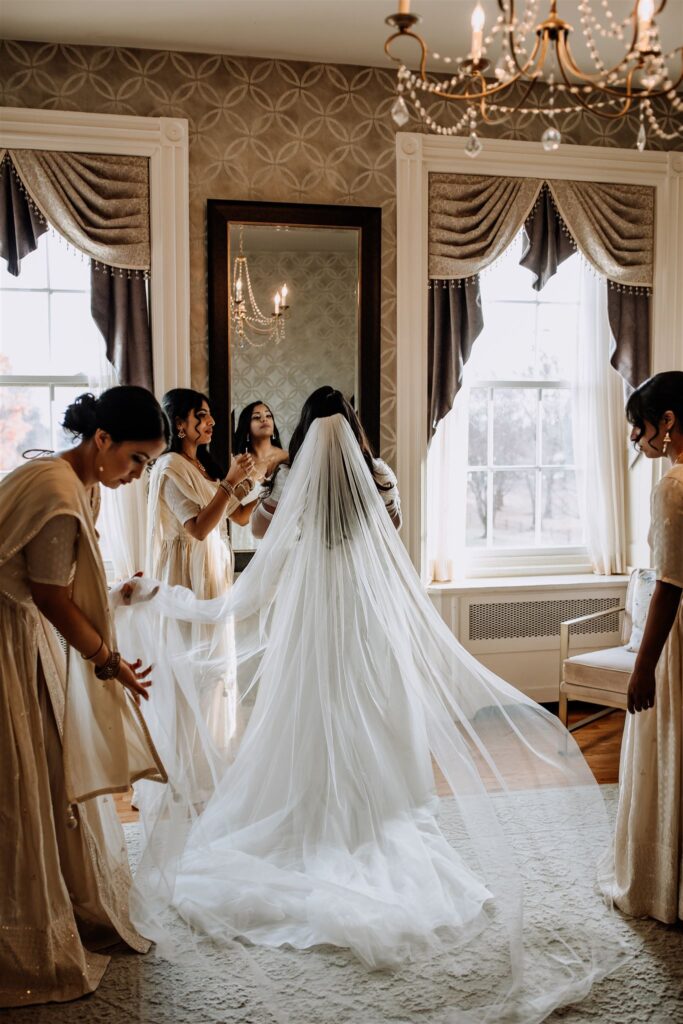We're a team of wedding, elopement and portrait photographers who put community over competition. We provide tips and resources for Photographers looking to up-level their businesses.
We're here to help When you join The Photography Business Academy
How to Book Photography Clients (Step by Step Guide)
One of the biggest rushes you get as a photographer—especially a photographer running a business—is when you book a client you’re genuinely excited to work with.
I still remember the feeling when I started landing not just more consistent jobs, but better jobs. Over time, the projects got more exciting too: destination weddings across the country, backyard weddings with music festival vibes, intimate elopements where it’s just me and the couple…even brand shoots that ended up in magazines.
These moments aren’t just creatively fulfilling—they’re the sign that your business is moving in the right direction.
It can feel amazing. But here’s the big question we all wrestle with at one point or another:
How do you actually book photography clients consistently?
And even more specifically, how do you book more wedding photography clients (or portraits, elopements, etc.) if that’s your niche?
The truth is, booking clients isn’t a one-step task. It’s a process that’s deeply tied into nearly every aspect of your business: your branding, your marketing, your sales, and your client experience.
So let’s break this down step-by-step!

Step 1: Get Clear on What You’re Offering
The first thing you really need to lock down is what you’re offering.
Sounds easy enough, right? In some ways, yes, but there’s a few things we want to get clear on…
A common mistake I see when it comes to “what you offer”—from new photographers and seasoned pros alike—is relying on “pretty photos” to do the selling.
Yes, your photos matter. But they’re not enough…
This is going to be especially true in saturated markets (which, let’s be honest, is most of them since photography is a super accessible hobby and industry to get started in!) and if you are wanting to charge more than a budget photographer.
Your images are your baseline.
It’s the baseline expectation a client would have when considering whether or not to book with you – that you take photos, that they are good, that you are competent at taking them, etc.
They need to be good (and most likely are, honestly). We see this again-and-again where photographers question their photography skill and in practice where they really are lacking is in other aspects of their business.
Your photos are the minimum requirement for someone to consider working with you.
Beyond that, people want to know:
- What experience are they going to get?
- What makes you different?
- What kind of clients are you perfect for?
These are just some of the questions to be thinking about as you look to define your offer better.
I challenge you to look at your photos not just as proof of your technical skill or as the only thing you are really offering, but as reflections of the experience you provide. They’re one piece of the puzzle that would influence someone to want to work with you (with other pieces being more of what you offer, how you offer it, how you price it, and such!).
We go deeper into packaging your services and clarifying your offerings inside the Financial Management for Photographers Course, inside The Photography Business Academy full course library, where we help photographers translate their creative work into a compelling service that actually books.

Step 2: Showcase Your Work With Confidence
A huge part of booking clients comes down to how confidently you showcase your work and capabilities as a service provider.
When I was starting out, I didn’t have a ton of confidence—and that’s completely normal. It takes time to build. But as you gain more experience, you’ll start seeing that confidence naturally increase—especially when you’re intentional about improving.
Confidence isn’t just internal, either —it also comes through in your thinking and actions…
Here are a few examples –
- How you present your portfolio
- How you talk about your process during sales consults
- How you respond to inquiries
If you have confidence in these things, it makes it a lot easier to facilitate more sales. And if you’re lacking confidence in them, it’s time to fix that!
Step 3: Build a Brand That Attracts (and also Repels)
Good branding doesn’t just look pretty. It attracts the right clients and repels the wrong ones.
Branding is often overlooked and misunderstood, but plays a significant role in allowing you to book photography clients more easily and consistently.
If your wanting to make adjustments to your brand (or build one from scratch), start by asking:
- Who do I actually want to serve?
- Why do I want to do what I am doing?
- What makes me different from everyone else in my market?
- What value do I bring that no one else does?
It’s not just about logos or color schemes. Many photographers skip straight to the visual side of branding and neglect the foundational strategy and things that root it in something intentional.
True branding clarity starts with defining your audience, understanding how you want to be perceived, and aligning your voice and messaging to reflect that.
We also encourage you to conduct competitor research and identify your unique selling propositions (USPs). This is all part of building a brand that doesn’t just blend in—but actually stands out.
Whether you’re charging $300 or $3,000, your branding plays a huge role in helping clients justify the investment. When I became more intentional about who I wanted to attract and how I showed up, I was able to raise my prices and attract clients who were excited to work with me.
If you want help crafting your brand and standing out in a crowded market, this is another area we dive into inside The Photography Business Academy in our Branding for Photographers Course.

Step 4: Marketing—How to Actually Get Found
Marketing is how people even know you exist.
When photographers think about how to book photography clients, a big part of the answer to this question is…another question – how do I get people to find me in the first place?
If your strategy is just “post to Instagram” or just rely on word of mouth from past clients, you’re missing major opportunities and setting yourself up for an inconsistent business. Here’s how to fix that:
Blogging and SEO for Photographers
This has been one of the biggest long-term growth channels in my business, and I believe it can be replicated again and again for other businesses, too!
It requires some upfront effort, but it allows you to generate organic leads consistently.
When done right, blog content can bring in traffic through Google searches, especially if it’s tailored around what your desired clients are searching for (like “elopement photographer in Colorado” or “boudoir photography in Austin, Texas”).
I also use blog posts as multi-purpose content. I’ll repurpose them in newsletters, pull quotes for Instagram captions, or link them in my email follow-ups.
Our in depth SEO and Blogging Course for Photographers is a massive resource to help photographers like you get set up with more impactful content like this!
Email Marketing
Email helps you nurture leads who aren’t ready to book yet.
Often this will be to people who have submitted an inquiry through your contact form, other times it might be to people who sign up to a newsletter (without inquiring).
By delivering consistent value—like planning tips, vendor spotlights, or behind-the-scenes content—you stay top-of-mind until they’re ready to reach out again.
This is especially important in wedding photography, where planning often happens over the course of many months. Having a sequence of emails ensures you’re continuing the conversation long after that first inquiry.
Another great feature of email marketing is that it can also be used to sell more services and products (like wedding albums) to people after they’ve become your client!
Related: Email Marketing Platforms for Photographers
Social Media
Posting to Instagram, TikTok, Facebook (or any other social media platform) isn’t just about showing pretty photos…
It’s about building connection and visibility.
It’s the social aspect of a social network that we want to lean into.
That’s not to say that sharing photos from recent work isn’t important (it is), but your entire social media strategy can’t just be that.
When I share BTS footage, storytelling reels, or even personal insights in my IG stories (for example), I tend to see higher engagement. Many of my clients said they reached out because they felt like they already knew me—and that starts with showing up consistently on these platforms.
But remember: social media is generally a top-of-funnel tool. It’s great for generating some awareness, but you still need a strategy for converting that attention into inquiries.
We talk about creating this strategy and connecting it to your website and SEO/blogging efforts in the Marketing for Photographers Course!
Networking & Referrals
Partner relationships have brought in some of my best leads over the years, and have helped my life flourish in many ways by opening opportunities to have deeper relationships with many people (and is part of the reason why Shoot and Thrive exists at all since this was built as a partnership between two “competing” photographers!).
In the wedding world, venues, florists, planners, videographers and DJs are all potential referral partners.
In niches like newborn photography, you might partner with baby boutiques, doulas, or parenting groups. These hyper-local connections can help you tap into tight-knit communities.
And beyond that, past clients, friends, and family can, of course, all refer you too!
Just make sure your client experience is strong—because people only refer you when they’re confident you’ll take care of others the way you took care of them.
Paid Ads
I treat paid advertising as a complementary marketing strategy. It absolutely has a place in marketing efforts, but it is not the solution to long term, consistent lead generation (but it can become part of that solution!).
Here’s the thing about paid advertising –
Yes, it can bring fast traffic and eyes to your business—but ads generally struggle to work for photography businesses that do not have desirable brands, easy to navigate websites, and overall messaging in place that aligns with the right audience.
This is where the trouble with ads comes into play – there is nothing worse than getting more eyes on your business and what you offer, then crickets when it comes to actual fresh inquiries and bookings.
That’s the telltale sign of a potentially good ad putting the wrong offer in front of people!
Now, if you’re in a position where you feel confident about what you are offering and how it’s presented to your audience, ads are something to consider.
The two types I see used most effectively are:
- Meta Ads (Facebook/Instagram): Great for audience specific targeting and retargeting.
- Google Ads: Ideal when targeting high-intent searches like “Philadelphia elopement photographer” and location specific keywords with clear buying intent.
Stronger ad performance will be built on the back of better business fundamentals and an organic marketing strategy.
We help our students inside The Photography Business Academy evaluate which marketing channels make sense for them and build repeatable systems that actually generate leads.

Step 5: Master the Sales Process
Once someone reaches out, you’re in sales mode—and this is where a lot of photographers freeze.
I used to let inquiries sit in my inbox because I wasn’t sure how to respond. But when I started replying quickly and confidently, everything changed.
Key steps:
- Respond quickly (within 24 hours max)
- Send helpful, personalized responses
- Follow up regularly if they don’t reply
- Offer sales consult calls to build connection
I’ve had people thank me for following up because they were so busy and overwhelmed with planning.
Over time, I built out a follow-up sequence that included tips, blog links, and even examples of past client experiences to keep the conversation going. The result? More people following through and booking.
Want help creating your sales process? We’ve got templates, scripts, and swipe files waiting for you in our Sales for Photographers Course, part of The Photography Business Academy course library.
Step 6: Make It Easy to Say Yes
Back in the early days of my photography business, here’s how I handled bookings (the few that would actually come in the door, too!
- Write a contract from scratch
- Print it out and mail it
- Wait for a check to arrive in the mail
Yikes.
Don’t be discouraged if this sounds at all relatable.
I share this to show you that even experienced photographers like myself have made mistakes in how they do things (and this is just one of many examples). But, I hope you can learn from my mistakes…
To really learn how to book photography clients, once you have someone in the door who has already said they want to work with you, now you need to make that as easy as possible.
Why? Because speed matters. If they’re ready to book, don’t let them wait.
There are many things you can do to improve this process, but a simple solution is to make sure you are using a customer relationship manager. There are many options available (and we recommend testing a few to see what resonates with your needs).
Currently, I use HoneyBook to send contracts and invoices in minutes. Once a client says yes, I stop what I’m doing, generate their contract and payment link, and get it in their hands…often within minutes.
And it’s not just about speed—it’s about removing friction. This is what makes sales actually go through!
Your booking process should feel effortless for your client. They should know exactly what to do next and feel supported every step of the way. This not only increases your booking rate—it sets the tone for a high-end client experience right from the start.
Step 7: Deliver an Incredible Client Experience
Once someone is booked, your job is to over-deliver. A great client experience leads to:
- Referrals
- Repeat business
- Raving testimonials
This is where your business truly becomes sustainable. Your goal is to make each client feel seen, heard, and genuinely taken care of—from first touchpoint to final gallery delivery.
That might include:
- Welcome packets and planning guides
- Check-in emails leading up to the shoot
- A sneak peek gallery within 24–48 hours
- Thoughtful surprises like thank-you notes or small gifts
The stronger your client experience, the more likely your clients will rave about you—and bring you more of the same kind of clients you love to work with.
We help you map out this entire journey inside The Photography Business Academy, where we cover this topic extensively in our Client Experience for Photographers course, so you can systematize it, scale it, and make it unforgettable.
Final Recap: How to Book More Photography Clients
To truly succeed with booking more photography clients, focus on these core pillars:
- Clarify your offer
- Showcase your work with confidence
- Build a brand that attracts (and repels)
- Market across multiple channels
- Create a simple, clear sales process
- Make it effortless for people to book
- Deliver a world-class client experience
Each of these steps builds on the next. This isn’t about hacks or one-size-fits-all tricks. It’s about building a business that reflects your creativity and your professionalism. When your systems, brand, and communication align with the kind of client you want to work with, the bookings will follow – I can guarantee it!
If you’re ready to implement all of this—with support, templates, and guidance along the way—join us inside The Photography Business Academy. It’s where photographers turn their passion into a profitable, booked-out business that allows them to create the life they want to live!

Honesty is a cornerstone of Shoot and Thrive, so we want you to know that some links in this post are affiliate links. This means we may earn a commission if you make a purchase—at no additional cost to you. We only recommend products and services we trust, have used ourselves, or have thoroughly researched based on industry feedback. Our goal is to provide solutions that genuinely help, whether they come from our direct experience or the collective knowledge of the photography community.
As photography business educators, we believe it's important for educators in this industry to be active photographers themselves. The images used throughout this website were taken through our photo studios - Hand and Arrow Photography and Marshall Scott Photography, except for stock images or if otherwise noted.
Turn Your Passion into a Thriving Business
Transform your photography business into a streamlined, profitable venture that gives you more time, freedom, and confidence.
With the Photography Business Academy, you’ll have a step-by-step guide to building the business—and life—you’ve always dreamed of. From branding to marketing, finances to client experience, we’ve got you covered.
Navigation
Shoot and Thrive is an ethically created resource for photographers needing mentorship, coaching, or business education. We believe in creating content that’s easy to digest and retain while incorporating educational best practices, so you gain clarity and confidence as a business owner.